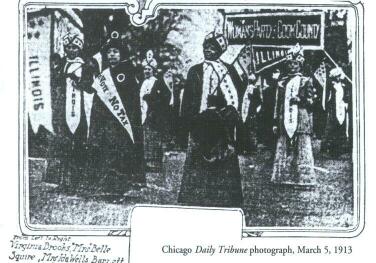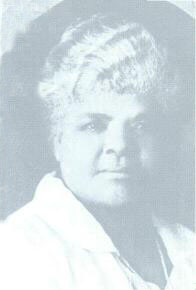 |
Home | Search | Browse | About IPO | Staff | Links |
 |
Home | Search | Browse | About IPO | Staff | Links |
|
Main Ideas
The parade, which represented a viable form of protest during the pre-mass-media era, can be re-created.
Connection with the Curriculum
Because she participated in Chicago's and the national women's movements, her political participation for full enfranchisement is a model of the movement's local, state, and national emergence. These lessons are best suited for coverage of the Progressive reform era and may be included in political science, women's studies, African-American, ethnic, and U. S. history classes.
Teaching Level
Materials for Each Student
Any of several primary sources written by black investigative reporter Ida Wells-Barnett Crusade for Justice, The Memphis Diary of Ida B. Wells, On Lynching, newspaper editorials, or personal diary entries Activity 1, 2, and 3 handouts
Objectives for Each Student
Analyze the steps of enfranchisement. Differentiate, compare, and evaluate the African-American women's agenda and the agenda of the southern women in the women's suffrage movement in 1913. Enumerate forms of protest activism. Formulate a plan of protest activism around an issue.
Opening the Lesson
As a class, students identify the issues that provoked these forms of protest. Examples:

33
Have students identify issues that would prompt them to take a personal stand.
Developing the Lesson
After reading the article, students are to debate and rank the three issues Wells-Barnett deemed most important. Role play Ida Wells-Barnett, Virginia Brooks, Bell Squire, and Grace Wilber Trout discussing the significance of the NAWSA parade to the suffrage movement. Divide the class into five groups and have each assume the identity of one of the five components of the march:
Have students identify their rationale for the decision they made during the march by considering the following:
Debrief the rationales in a large group and evaluate each decision and its relationship to the expansion of democracy in the Progressive era.
Concluding the Lesson
Drama students or professional actors might be used to speak on stage about their experiences and feelings about the incident. All participants in the parade are to dress and carry artifacts re-created to represent the era.
Extending the Lesson
Research news coverage of Ida Wells Barnett, the women's suffrage movement, and the 1913 NAWSA Parade. Listen to the audio-tape interview with the granddaughter of Ida Wells-Barnett, "Taking A Stand." Conduct a similar interview with a family member who has taken a stand on an issue. Research and compare the protest activism that led to the enfranchisement of African-Americans, women, and immigrants in America. Prepare a mass-media presentation or network news show that would introduce Wells-Barnett, the major events during her lifetime, and her work as a crusader for justice. Tape news shows for the school channel, local educational channel, or community access programming. Catalog the show in the school library.
Assessing the Lesson
34
Write an editorial promoting your position on a critical issue.
35
36
Wells-Barnett was an avid writer and a crusader for justice. She was not afraid to take a stand. Consider her participation in the NAWSA parade and the personal stand that she took. Predict what action she might have taken locally, statewide, and nationally in response to what happened. Use one of the following as a vehicle for recording her response:

Click Here to return to the Article
37
|
|
|